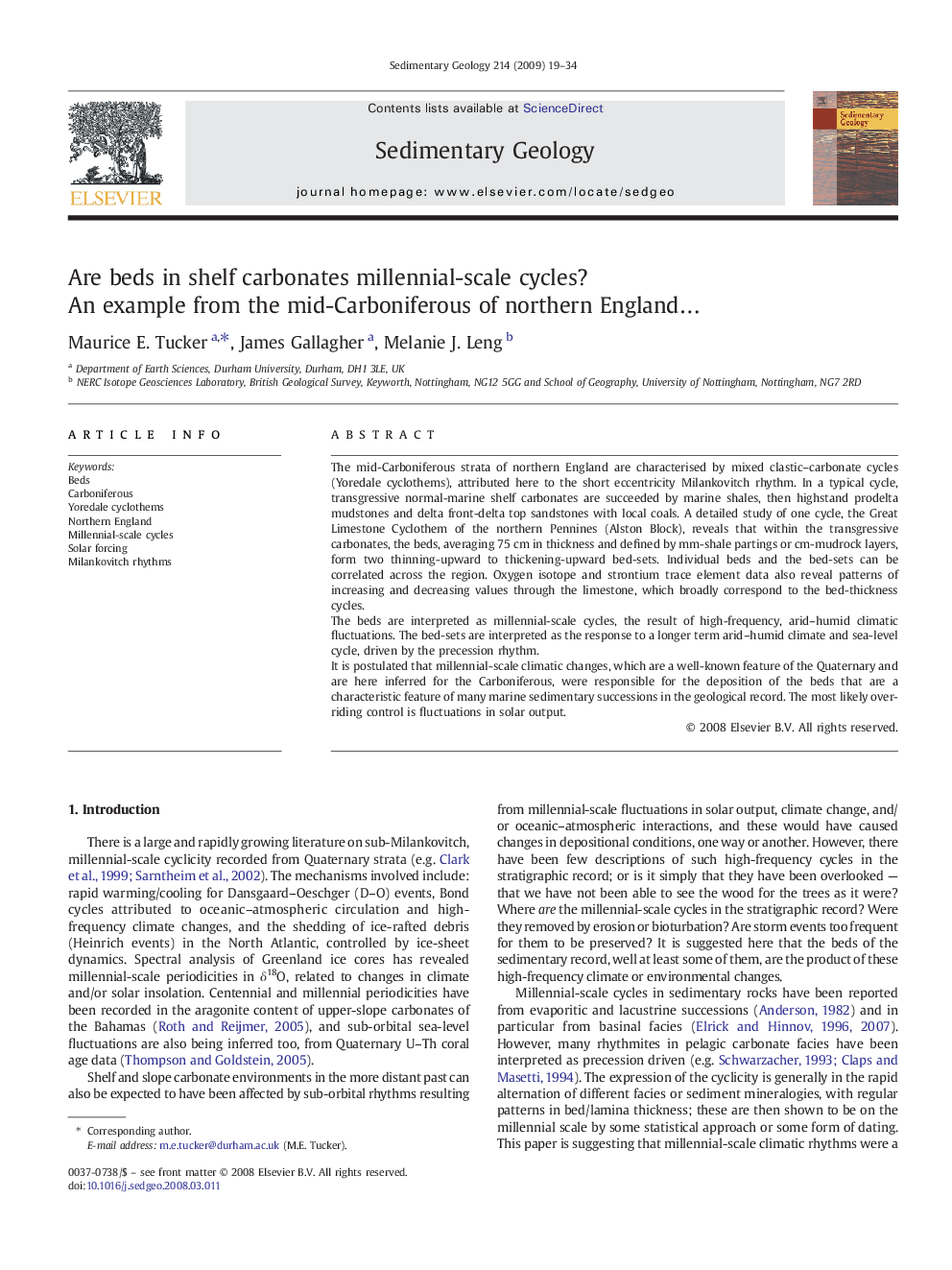| Article ID | Journal | Published Year | Pages | File Type |
|---|---|---|---|---|
| 4690454 | Sedimentary Geology | 2009 | 16 Pages |
The mid-Carboniferous strata of northern England are characterised by mixed clastic–carbonate cycles (Yoredale cyclothems), attributed here to the short eccentricity Milankovitch rhythm. In a typical cycle, transgressive normal-marine shelf carbonates are succeeded by marine shales, then highstand prodelta mudstones and delta front-delta top sandstones with local coals. A detailed study of one cycle, the Great Limestone Cyclothem of the northern Pennines (Alston Block), reveals that within the transgressive carbonates, the beds, averaging 75 cm in thickness and defined by mm-shale partings or cm-mudrock layers, form two thinning-upward to thickening-upward bed-sets. Individual beds and the bed-sets can be correlated across the region. Oxygen isotope and strontium trace element data also reveal patterns of increasing and decreasing values through the limestone, which broadly correspond to the bed-thickness cycles.The beds are interpreted as millennial-scale cycles, the result of high-frequency, arid–humid climatic fluctuations. The bed-sets are interpreted as the response to a longer term arid–humid climate and sea-level cycle, driven by the precession rhythm.It is postulated that millennial-scale climatic changes, which are a well-known feature of the Quaternary and are here inferred for the Carboniferous, were responsible for the deposition of the beds that are a characteristic feature of many marine sedimentary successions in the geological record. The most likely over-riding control is fluctuations in solar output.
